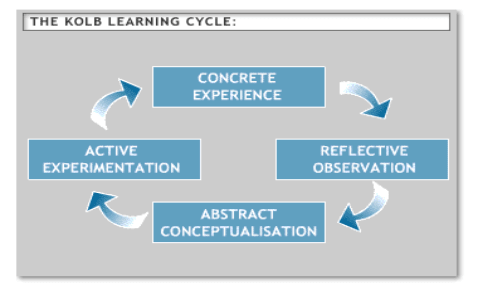Question :
Questions- This assessment will cover the following questions:
- Explain employee knowledge, skills and behaviours required by HR professionals in the M&S.
- Elaborate the factors to be considered when implementing and evaluating inclusive learning and development to drive sustainable business performance.
- M&S is a clothing brand. Implement knowledge and understanding to the ways in which high-performance working (HPW) contributes to employee engagement and competitive advantage.
- Explain the ways in which performance management, collaborative working and effective communication can support high-performance culture and commitment.
Answer :
INTRODUCTION
In today’s era, it is not easy to differentiate between great and non-great teammates in an organisation. Likewise, to make difference in between outstanding employees from lacklustre ones is also not a simple task for a manager. However, this is significant for a firm to develop its individuals and teams to gain improvement in organisation as high-performing teams serve as the building blocks of a company (Haber‐Curran and Shankman, 2018). In the present report, an understanding of role as an HR Officer will be developed along with studying about inclusive learning and development within the organisation for driving sustainable business performance. For this purpose, Marks and Spencer (M&S) has been chosen which is one of the leading fashion and retail stores of UK. Further, discussion on effective use of high-performance working (HPW) framework and performance management models to support high-performance culture will be done in the report.
SCENARIO 1
P1. (a) Appropriate knowledge, skills and behaviours (KSB) that are required by HR professionals
In Marks and Spencer, HR Officer is required to possess high knowledge, skills and behaviours to perform the role assigned effectually. These are given as below:
Knowledge as an HR Officer
- BSc/BA in Business Administration or relevant field– This degree is mandatory to be there in the HR Officer of M&S.
- Understanding of MS Office and HRMS(human resource management system)– Having good knowledge of using these software is required in HR Officer to perform all related tasks.
- Knowledge of labour laws and related disciplinary processes– It is necessary to have knowledge regarding labour laws and other related disciplinary processes so that conflicts occur anytime can be solved easily and in a fair manner.
- Experience as HR Officer or at any other HR position– In M&S, HR Officer is to have previous experience of working at the same designation or any other position in HR department.
Skills as an HR Officer
- Negotiation– To be able to negotiate effectively at the time of conflict or dispute, if occurs at workplace is necessary being HR Officer in M&S.
- Effective communication and interpersonal skills– HR Officer needs to interact with everyone in company for some or the other purpose and so, he must be able to communicate in an effective way and should maintain healthy relations with others.
- Teamwork and collaboration– One of the major skills that HR Officer in M&S should possess is to work in teams with high coordination (Martin and Manley, 2018).
- Worker’s compensation– He must be skilled to solve any issues related to the remuneration of staff members as well as their promotion and benefits.
Behaviours as an HR Officer
- Working closely with various departments– It is vital for the HR Officer in M&S to coordinate with all other units rather focusing only on HR department.
- Promoting equality and diversity– He is supposed to treat all employees at workplace with equality and respecting the differences they have in terms of culture, background and race.
- Implementing disciplinary procedures– HR Officer is required to follow all rules and policies like being in professional attire and entering and exiting from the office on time (Dowling and et.al., 2018).
- Delivering induction for new staff– The way they speak and behave should be soft enough while giving induction to new employees to make them feel comfortable.
P2. (b) Completed personal skills audit for an employee to identify training and development needs considering the knowledge, skills and behaviours
As per analysis made on personal skills audit for the position of HR Officer in M&S, training and development needs can be effectually identified based on the knowledge, skills and behaviours he possess which is like:
|
Skills that HR Officer require |
Required skills that have been achieved |
Skills development needs |
|
Administering payroll and maintaining employee records |
Using MS Office |
Database Management and using HR software |
|
Interpreting and advising on employment laws |
Working on internet |
Drafting contracts of employment |
|
Developing HR planning strategies with considering immediate and long-term needs of staff |
Using e-mails |
Delivering training sessions |
|
Negotiating with staff and their representatives |
Writing reports |
Using excel spreadsheet |
|
Analysing training needs in conjunction with departmental managers |
Producing material to support presentations |
Taking notes of disciplinary hearings |
|
Preparing staff handbooks |
Exploring more than one solution to solve a problem |
Resolving disputes/complaints, interviewing and advising on HR issues |
|
Promoting equality and diversity to maintain a positive culture at workplace |
Considering the ideas of others to solve issues |
Making effective use of verbal reasoning skills and having ability to deal with complex data with selective use of information |
Training and development plan
|
Training and Development Needs |
Priority (rating 1-5) |
Activities to be Done |
Monitoring and Evaluation Methods |
Time Frame |
|
DBMS and HR software |
2 |
Sessions based on use of DBMS and HR software will be organised by HR and IT manager in M&S. |
Taking feedback and tests |
2-3 months |
|
Problem solving skills |
5 |
Conferences by some known leaders will be arranged (Martin and Manley, 2018). |
Through providing case studies and checking the solutions. |
5-6 months |
|
Verbal reasoning and data handling |
3 |
Coaching and workshops will be provided by higher management. |
By providing complex and variety of data at a time |
3-4 months |
|
Employment laws |
4 |
Sessions will be held in firm based on all employment related laws and legislations by the HR manager or HR head of M&S. |
By giving cases of conflicts to resolve related to employee issues in M&S |
6 months |
P3. (c) Professional development plan for the role of HR Officer
Professional Development Plan
|
Development Objectives |
Ways by which new skills or knowledge will be acquired |
Standards and measures used to assess achievement of objectives |
Timeline |
|
Decision making |
By using rationale thinking, taking advice from the HR head or other senior authorities and dealing with complex situations like handling conflicts in between workers and complicated tasks, decision making by HR Officer can be acquired. |
This skill can only be evaluated after implementing the decisions and checking its results that whether it proved to be beneficial for business or not. Also, with determining the solution of issue for which judgement has been made, it can be evaluated (OH and et.al., 2018). |
5-6 months |
|
Time management |
By setting the priorities, making to-do lists, scheduling the tasks, bifurcating the duration for each activity, setting deadlines and delegating responsibilities, skill of time management can be acquired by HR Officer in M&S (Samajdar, Garg and Krishna, 2018). |
By checking that whether set deadlines have been achieved or not, time management skills of HR Officer in M&S can be monitored as well as evaluated. Along with that, as per the made schedule, though following up the tasks to be done, evaluation can be made. |
2-4 months |
|
Creating solidarity |
Through making the frameworks which makes it realise that all employees have something to take and give, recognizing the similarities and differences of all at workplace and by having effective as well as equal communication with teams, this skill can be acquired by the HR Officer. |
Observing the culture at workplace that whether employees started coordinating with each other nor not and if communication gap is being eliminated, this skill of HR Officer can be evaluated in M&S. |
3 months |
|
Ability to work under pressure |
To acquire this skill, it is crucial for HR Officer in M&S to perform multiple and complex tasks at a time by dividing the time and priority for each. Dealing with many tasks at a time with specific deadlines will make him able to learn this skill. |
It can be evaluated through checking the results gained after assigning many tasks together to HR Officer by the HR manager in terms of quality being achieved (Maltoni and Lomonaco, 2018). Also, by checking if deadlines are met or not, it can be evaluated. |
4-6 months |
P4. (d) Differences between organisational and individual learning; training and development
Organisational and individual learning – Individual learning refers to the process of developing employees of the organisation in such a way that their knowledge, skills and behaviours will get improved in a manner that set targets will be attained effectually. Organizational learning on the other hand is much more complex and dynamic as the level of complexity in this is high due to a large number of diverse individuals (Sprinkle and Urick, 2018).
Training and development – Training can be referred as a program with assists employees in an organisation to learn specific knowledge and skills so that their current job roles can be improved. While, development is a vast term, main emphasis of which is on the growth as well as future performance of staff, rather just focusing on current job role.
Differences between organisation and individual learning are:
|
Organisational learning |
Individual learning |
|
· At organisational level of learning, employees are developed through promoting a healthy workplace environment. · Organisational learning is highly significant as it is directly affected with what individuals in firm have learnt with respect to impacting its processes and functioning. · Organisational learning brings innovation in Marks and Spencer that increases creativity of employees and thus, leads to create an environment at workplace where people are willing to learn (Sartori and et.al., 2018). · Organisational helps in formulation and implementation of company strategies with delivering the same to human resources of firm. |
· However, when learning is given at individual level, employees are made able enough to deal effectually with changes and adapt same without any resistance (Wingreen and Blanton, 2018). · Individual learning results in promoting continuous professional development (CPD) at workplace for which, mainly HR professionals in Marks and Spencer are responsible. · Individual learning is rendered considering the social background of employees, their relationship with staff members and designation on which they are working. · In M&S, individual learning results in enhancing the existing skills and knowledge of employees that are required to perform assigned tasks effectually along with their personal growth (Oinas-Kukkonen and Harjumaa, 2018). |
Differences between organisational and individual training and development are:
|
Organisational training and development |
Individual training and development |
|
· Training and development at organisational level results in improving the behaviour of employees from the inside out and thus, leads to improve the workplace culture (Lv and Xu, 2018). · Performance of business gets improved as a whole when at organisational level, training is imparted to employees which leads M&S to perform with higher efficiency resulting in quality work and so, gaining increased goodwill. · Organisational training and development plays a vital role in increasing the competencies of individuals and therefore, ensures to meet the set targets on time effectually (Colloms, 2018). |
· Training and development sessions in Marks and Spencer leads to improve the existing skills, abilities and knowledge of employees that makes their work improved. · As per today’s highly competitive and dynamic environment, M&S needs skilled employees who can perform complex tasks effectively for which training and development is required (Buchanan and McCalman, 2018). · With the help of providing training at individual level, gap between actual job performances with the expected one is eliminated. · Training and development at individual level increases the confidence of employees and so, they work with higher efficiency that results in rise in the productivity. |
P5. (e) Need for continuous learning and professional development to drive sustainable business performance
Being operating in a highly competitive market, it is crucial for Marks and Spencer to focus on continuous learning and professional development of staff so that they will be able to drive business to perform in a sustainable manner. Need for same can be understood by the following:
- To encourage personal growth– Continuous learning and professional development leads employees to boost their performance and so, help in gaining growth at personal level.
- To improve performance in current job– The current jobs which employees are performing at present in M&S will get improved through continuous learning as existing skills and knowledge enhances with same (Samajdar, Garg and Krishna, 2018).
- To prepare employees for future opportunities– With this, employees become confident and efficient enough in their work which ultimately leads them to get ready for grabbing the future opportunities which in turn is beneficial for M&S.
- To enhance work experience of employees– Also, with gaining learning on continuous basis and professional development as well, overall work experience of employees will be enhanced which will be beneficial for M&S in long run (OH and et.al., 2018).
Kolb’s Experiential Learning Cycle is the theory proposed by David Kolb will prove to be highly helpful in explaining the need for continuous learning and professional development in Marks and Spencer which is given as below:

Figure 1: Kolb's Experiential Learning Cycle
(Source: Kolb's Learning Cycle, 2018)
- Concrete Experience– This is the first phase of learning where employees in organisation start their work performing the tasks they are assigned with. Here, their active participation in same is the key to learning. It says that in M&S, people will learn by practically performing the tasks; rather just watching it.
- Reflective Observation– It is the second phase where employees are supposed to stepping back from the tasks and taking some time to have a look on what they have performed and review their experience. Here, many questions are asked from the teams in firm. Vocabulary here plays a crucial role among members of team in M&S (Kolb's Learning Cycle, 2015).
- Abstract Conceptualisation– This stage is all about making sense that what has happened in the past performance. Comparison is done here in terms of what they have done in tasks assigned, reflect upon and also, what exactly they were knowing. Employees of M&S in this phase take ideas from colleagues, any new knowledge if developed or previous observations.
- Active Experimentation– This is the last and final stage of learning cycle as per which learners i.e. employees make decision to put their learning into practice for which effective planning is to be done (Kolb's Learning Cycle, 2015). Here, prediction about the future outcomes is done on the basis of which actions are decided that are to be taken to handle the tasks.
SCENARIO 2
P6. Contribution of HPW to employee engagement and competitive advantage within a specific organisational situation
High-performance work systems (HPWS)
- Reduced Status Barriers – Under HPWS, it is assumed that good ideas can be received from any level of the organisation. It says that great organisations are those which seeks to main high trust culture and value their employees.
- Selective Hiring – It refers that organisations like M&S should be précised enough to identify the critical skills and attributes of employees so that hiring can be done accordingly to best fit the needs of vacant positions (Buchanan and McCalman, 2018).
- Ensuring Employee Security – It says that organisations which are focused on retaining existing workforce rather employing part-time or contract employees have advantage of gaining their trust, loyalty and commitment for longer span of time.
Elements of HPWS
- Training – Training is the major element of high performance working systems as without rendering it to employees, to expect improvement in their performance is of no use.
- Participation in decision making – Under HPWS, for gaining effective performance of employees, it is important to increase their motivational level that can be done by making them involved in decision making process of M&S to make them feel valued (5 Elements of a High Performance Work System, 2018).
- Communication – Another major element of HPWS is communication which if not effective in the organisation, may lead to hamper the performance of employees. It is crucial to have effective communication in between the management and employees of Marks and Spencer (Lv and Xu, 2018).
Outcomes of a high-performance work system
- Achievement of goals – Ultimate objective of HPWS is to attain the goals of firm within specified timeframe with meeting the set standards.
- Increased morale – HPWS results in enhancing the morale of employees in M&S as they feel motivated, valued and recognized in the organisation for their performance.
- Preparing employees for future hurdles– HPWS provides effective training and development sessions to employees, thus improving their skills and knowledge along with experience which ultimately results in making them well prepared for dealing effectually with problems that may occur in the future of M&S (Colloms, 2018).
Conditions that create a high-performance work system and contribute towards employee engagement and competitive advantage
- Job satisfaction– If employees are highly satisfied with their job, then it can be said that HPWS is there in M&S which helps in increasing the employee engagement and make firm able to gain competitive advantage over others.
- Constant feedback– By taking feedback on constant basis regarding the improvement of performance of employees, HPWS can be created that will help M&S in making employees highly engaged with their allotted tasks and gaining competitive edge (Oinas-Kukkonen and Harjumaa, 2018).
- Ethics– HPWS can never be there in a firm if it is not running ethically. Marks and Spencer runs their operations in a fair and transparent manner and so, it can be said that it is creating a high performance working system and contributing to gain competitive advantage over other rivalry firms.
P7. Different approaches to performance management and using specific examples showing the way they support high performance culture and commitment
Activities involved in performance management
- Taking regular reviews– In Marks and Spencer, one of the major activities involved in performance management is taking review of what employees have performed on regular basis so that corrective measures can be taken on time.
- Making development plan– Another activity is to make the development plan so that as per the deviations found in performance of employees, suitable initiatives can be made (Dowling and et.al., 2018).
- Setting objectives– Main activity of performance management is to set a specific goal, then measure the performance of employees and take measures to fill the gap between desired and actual results.
Purpose of performance management system
- Developing internal communication system– Purpose of performance management system in M&S is to develop an internal communication system where employees can effectually interact with their supervisors.
- Supporting employees to perform well– Another rationale behind performance management system is to support the employees by assessing their weak areas with an aim to improve them (Martin and Manley, 2018).
- Rewarding and recognising extraordinary performance– One more objective behind performance management system in M&S is to provide rewards and recognition to employees to make them highly motivated on the basis of their performance.
Comparison between major methods for measuring performance
- Comparative approach– In this approach, performance of an employee is given with ranking in comparison to others in same team or group on the basis of highest to lowest level. Through using techniques like pared comparison, forced distribution method and graphic rating scale, ranking is given to employees (Dey and Giri, 2017). Using the same, Marks and Spencer provides rewards to the top performers along with offering training and guidance to those who got lower rating so that they can also be promoted to higher level in organisation. This plays a significant role in supporting high performance culture and commitment at workplace.
- Behavioural approach– According to this approach of performance management, a specific description regarding an employee’s behaviour to perform a specific task is analysed along with the frequency. This technique proves to be highly effective and suitable for judging the reliability as well as accuracy of what an employee has performed (Buchanan and McCalman, 2018). However, if it will be used in M&S, there is one limitation i.e. a large number of employees are there and so, to remember voluminous data is not possible for managers to measure their performance. Thus, using this approach will not be suitable for the firm and lead to give a biased rating to team members.
Best Dissertation Writing Service Online to Take the Load Off Your Mind
CONCLUSION
From the above study, it can be concluded that it is the interrelation between individual, team and organization in terms of their effectiveness which ensures that firm is giving due emphasis on development of employees as a business essential. It has been assessed that providing training and development at individual and organisational level proves to be highly beneficial for firm to boost its overall performance. Moreover, with continuous learning and professional development, sustainability in Marks and Spencer can be gained as people with updated skills and knowledge perform their tasks effectually. Apart from that, it can be articulated that with HPW, firm can gain the advantage of active participation of people in organisational activities with gaining competitive edge over others. Further, with using appropriate performance management approaches like comparative and behavioural, firm can gain high commitment of employees.
You can also check out:-
Leadership and Change Management
REFERENCES
Books and Journals
Buchanan, D.A. and McCalman, J., 2018. High performance work systems: The digital experience. Routledge.
Colloms, M., 2018. High Performance Loudspeakers: Optimising High Fidelity Loudspeaker Systems. John Wiley & Sons.



















